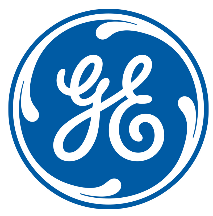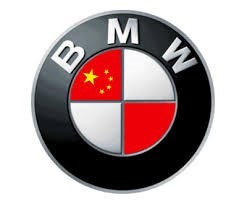Disruption Risk – Everywhere! Ignore at your peril
Understanding disruption risk is one of the key drivers of avoiding underperforming businesses. This is critical in a world where most businesses are experiencing significant turbulence because of the disruptive effects of the most significant demographic shifts with 4.4bn millennials and centennials driving new consumption patterns.

Understanding disruption risk is one of the key drivers of avoiding underperforming businesses. This is critical in a world where most businesses are experiencing significant turbulence because of the disruptive effects of the most significant demographic shifts with 4.4bn millennials and centennials driving new consumption patterns. This is being compounded by the profound and, in many instances, devastating impact of technological developments including 5G, 3D printing and artificial intelligence creating significant challenges for companies with legacy infrastructure and organisational structure where nimbleness and innovation are the keys to successfully grow your businesses in today’s fast changing and complex operating environment.
Our analysis show that all sectors and most companies are experiencing disruption. According to Accenture 60% of the 3,600 world’s largest companies are experiencing disruption. We have over the past 9 months provided many examples of companies and sectors experiencing disruption and why, in many instances, we are avoiding entire sectors. Insync’s experienced investment team are vigilant in monitoring data to pick up changes in trends early reducing the risk of investing in underperforming businesses. We provide a brief update below on companies and sectors we avoided early suffering from high disruption risk.
General Electric/Siemens – GE Smashed by Disruption Article

With only one in four turnarounds successful according the findings by the Boston Consulting Group it should not surprise anyone that Insync would not invest in turnarounds such as General Electric and Siemens. Despite their once unassailable position as industrial leaders both businesses have come under severe pressure due to the unstable operating environment where disruption is impacting a manufacturer’s ability to deliver products, manage the supply chain, and serve customers in the traditional manner. What makes General Electric totally un-investable, from Insync’s perspective, is the company’s pension deficit/market capitalsation ratio which is circa 25%, one of the highest in the peer group (BofA Corporate AA Bond Yield Index) by a significant margin. The company has a sizeable $27Bn USD of pension deficit that was set to rise by $7Bn/25+% on the back of recent declines in interest rates. Recent moves by management to inject a $4-5Bn of cash contributions merely offset the $7Bn increase in added liability since 2018, so really do not represent any progress versus where it stood at 2018. We understand rates are outside of the company’s control, but that is the point, it’s a risk that is a known unknown and something we think a key consideration to investing in, and running for that matter, a company with almost 1,000,000 people under entitlement.
BMW – Not So Ultimate Driving Machine Article
 The automotive sector is facing both structural demographic and industry headwinds. As Gen-Z’ers head into their 20’s, more are moving to big cities with mass transit, where owning a car is neither necessary nor practical. This is occurring globally from the USA to Europe to Asia. This is being compounded by an industry cycle slowdown. Chinese auto sales have fallen 14 times in the last 15 months under the weight of a trade war. U.S. auto sales have followed suit and are expected to continue to fall 2.2% percent in the back half of 2019. Recent comments from both VW’s CEO and from tire maker Pirelli, who cut its guidance for 2020, continue to exemplify an industry where the very worst of a recession may still be yet to come.
The automotive sector is facing both structural demographic and industry headwinds. As Gen-Z’ers head into their 20’s, more are moving to big cities with mass transit, where owning a car is neither necessary nor practical. This is occurring globally from the USA to Europe to Asia. This is being compounded by an industry cycle slowdown. Chinese auto sales have fallen 14 times in the last 15 months under the weight of a trade war. U.S. auto sales have followed suit and are expected to continue to fall 2.2% percent in the back half of 2019. Recent comments from both VW’s CEO and from tire maker Pirelli, who cut its guidance for 2020, continue to exemplify an industry where the very worst of a recession may still be yet to come.
Harley-Davidson – Harley Davidson Rides Into a Crowd of Millennials Article

Harley, like other big businesses, focused heavily on Baby Boomers and Gen X-ers (after World War II until mid-1980’s). Generally, it served them and their investors well riding this wave of generational affluence. What Harley perhaps missed is that Millennials buy motorcycles for ‘ease of transportation’ and environmental footprint. Thus, Millennials are more attracted to lower-priced, lighter weight, fuel efficient and consequently lower margin bikes. The company’s latest results showed that they continue to suffer from declines in the US market. US motorcycle year over year retail sales growth declined 3.6% in the third quarter 2019 and worldwide retail sales fell 1.2% year over year. Beyond re-building a new base of riders, Harley’s largest challenges include working through the substantial used bike inventory and competing successfully in the new middleweight and small displacement segments next year.
Kraft-Heinz – A Not so Krafty Kraft Article

This was a favourite stock of professional investors seeking to copy Buffet’s portfolio, particularly after Warren Buffet’s 27% investment in the company. The lack of innovation and no desire to invest for growth made sure they failed to adapt to changing consumer tastes. Similar to General Electric, the turnaround is going to be challenging exacerbated by the mountain of debt on its balance sheet. The challenges are significant when the company is on the one hand trying to dispose of some of its well known brands to pay down debt and on the other stay relevant as consumer tastes continue to change rapidly from the old brands to, in many instances, the new.
S&P Global rating agency in August stated that Kraft Heinz Co. could be hit with a junk credit rating by mid-2021 if it fails to turn itself around. S&P said results for the maker of Kraft Macaroni & Cheese and Heinz ketchup have been weaker than it expected, and the company needs to cut debt relative to a measure of earnings. The credit grader said it is worried about the risks Kraft Heinz could face in the second half of 2019, including higher commodity costs and lower stocking at retailers. Kraft Heinz carries the lowest investment-grade rating from all three major graders. With about $30.3 billion USD of long-term debt outstanding, the company is among the 20 largest issuers of debt in the lowest tier of investment-grade, excluding financial companies. If Kraft Heinz were downgraded by at least two credit graders, it would fall into junk bond indexes, making it one the biggest issuers of high-yield debt. Key questions will include whether the dividend will be trimmed or cut completely and how quickly the company plans to deliver the balance sheet, what the outlook for organic sales growth and operating profit growth and/or margins looks like in the near and medium term (including how much reinvestment is needed in marketing, innovation and ingredients) and what plans the company has to reshape the portfolio (and in particular which businesses might be earmarked for divestment).
Anheuser-Busch – Heineken Riding the African Megatrend Article

The beer industry has historically been an attractive industry to invest in generating strong margins and cash flows and increasing dividend. Based on traditional economic moat analysis, Anheuser-Busch InBev (ABI), being the undisputed leader in beer with 30% of global volumes and circa 50% of profits, would be the most attractive company to invest in. Insync invested in the company for a number of years but our team started to see a change in trend which led us to sell the stock in September 2015. Global beer volumes was starting to show a pattern of growing below GDP. Going forward (2018-22), Euromonitor forecast beer volume growth at c30% of GDP which is a significant slowdown. Recent results continued to show challenges in the growth outlook for Anheuser-Busch with organic volume declining 0.5%.
The growth in beer volumes over the next decade is expected to come from select pockets of Africa, Asia and Latin America. Insync invested in Heineken 2016 to gain exposure to many of these faster growing emerging markets with a greater percentage of Heineken’s sales derived from premium beers which makes it very well positioned to continue to benefit.
Wells Fargo – Global Banks Economic Moat is Crumbling Article
Like Kraft-Heinz this has been a favourite stock of followers of Warren Buffet and rightly so for many fund managers who seek to copy Buffet’s approach, and in many instances, his portfolio holdings. However, the moat has weakened significantly for Wells Fargo and many banks globally over the past few years. Falling interest rates, high leverage, disruption from fintechs offering the latest ease of use technology platforms with better pricing and customer service you don’t need to be a rocket scientist or have a group of eminent advisors on economic and monetary policy on your investment board to work out that the sector is facing an uphill task.
Recent third quarter results continued to show pressure on net interest margins and fees. Worryingly in an internal survey this year, just 38% of employees said they felt senior management understood obstacles faced by workers.
With roughly 262,000 employees, Wells Fargo has the largest employee base of the major U.S. banks. Alarmingly, in a recent survey, 54% of customers trust at least one tech company more than the banks.
For more information on other Megatrends, please visit Insync Funds Managers’ Website here.
EQT Responsible Entity Services Limited (“EQT”) (ABN 94 101 103 011), AFSL 223271, is the Responsible Entity for the Insync Global Quality Equity Fund and the Insync Global Capital Aware Fund. EQT is a subsidiary of EQT Holdings Limited (ABN 22 607 797 615), a publicly listed company on the Australian Securities Exchange (ASX: EQT). This information has been prepared by Insync Funds Management Pty Ltd (ABN 29 125 092 677, AFSL 322891) (“Insync”), to provide you with general information only. In preparing this information, we did not take into account the investment objectives, financial situation or particular needs of any particular person. It is not intended to take the place of professional advice and you should not take action on specific issues in reliance on this information. Neither Insync, EQT nor any of its related parties, their employees or directors, provide and warranty of accuracy or reliability in relation to such information or accepts any liability to any person who relies on it. Past performance should not be taken as an indicator of future performance. You should obtain a copy of the Product Disclosure Statement before making a decision about whether to invest in this product.
*The views and opinions expressed in this article are those of the author and do not necessarily reflect the views and opinions of Reach Markets.
Reach Markets Disclaimer
Reach Markets Pty Ltd (ABN 36 145 312 232) is a Corporate Authorised Representative of Reach Financial Group Pty Ltd (ABN 17 090 611 680) who holds Australian Financial Services Licence (AFSL) 333297. Please refer to our Financial Services Guide or you can request for a copy to be sent to you, by emailing [email protected].
This publication contains general securities advice. In preparing the advice, Reach Markets Australia has not taken into account the investment objectives, financial situation and particular needs of any particular person. Before making an investment decision on the basis of this advice, you need to consider, with or without the assistance of a securities adviser, whether the advice in this publication is appropriate in light of your particular investment needs, objectives and financial situation.
Reach Markets Australia and its associates within the meaning of the Corporations Act may hold securities in the companies referred to in this publication. Reach Markets Australia does, and seeks to do, business with companies that are the subject of its research reports. Reach Markets Australia believes that the advice and information herein is accurate and reliable, but no warranties of accuracy, reliability or completeness are given (except insofar as liability under any statute cannot be excluded). No responsibility for any errors or omissions or any negligence is accepted by Reach Markets Australia or any of its directors, employees or agents. This publication must not be distributed to retail investors outside of Australia.
It is recommended that you seek independent advice and read the relevant Product Disclosure Statement before making a decision in relation to any investment. Any advice contained in this communication is general and has not taken into account the investment objectives, financial situation and particular needs of any particular person.
General Advice Warning
Any advice provided by Reach Markets including on its website and by its representatives is general advice only and does not consider your objectives, financial situation or needs, and you should consider whether it's appropriate for you. This might mean that you need to seek personal advice from a representative authorised to provide personal advice. If you are thinking about acquiring a financial product, you should consider our Financial Services Guide (FSG) including the Privacy Statement and any relevant Product Disclosure Statement or Prospectus (if one is available) to understand the features, risks and returns associated with the investment.
Please click here to read our full warning.
